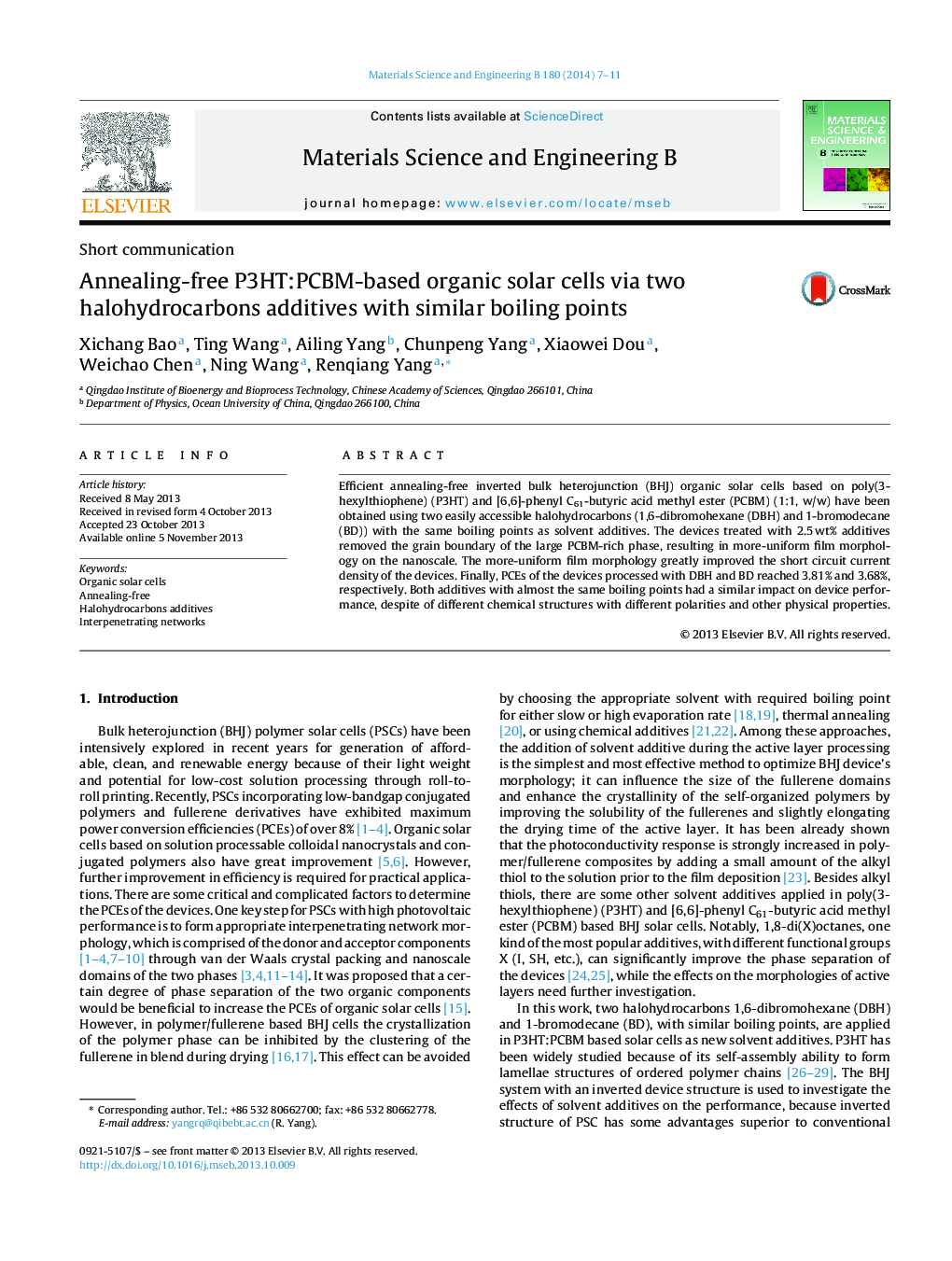| Article ID | Journal | Published Year | Pages | File Type |
|---|---|---|---|---|
| 1528770 | Materials Science and Engineering: B | 2014 | 5 Pages |
•Two halohydrocarbons were selected as additives for polymer solar cells.•The additives can improve the photocurrent of photovoltaic devices.•Extensive characterization of the blends was done to explore the mechanism.
Efficient annealing-free inverted bulk heterojunction (BHJ) organic solar cells based on poly(3-hexylthiophene) (P3HT) and [6,6]-phenyl C61-butyric acid methyl ester (PCBM) (1:1, w/w) have been obtained using two easily accessible halohydrocarbons (1,6-dibromohexane (DBH) and 1-bromodecane (BD)) with the same boiling points as solvent additives. The devices treated with 2.5 wt% additives removed the grain boundary of the large PCBM-rich phase, resulting in more-uniform film morphology on the nanoscale. The more-uniform film morphology greatly improved the short circuit current density of the devices. Finally, PCEs of the devices processed with DBH and BD reached 3.81% and 3.68%, respectively. Both additives with almost the same boiling points had a similar impact on device performance, despite of different chemical structures with different polarities and other physical properties.
Graphical abstractFigure optionsDownload full-size imageDownload as PowerPoint slide
